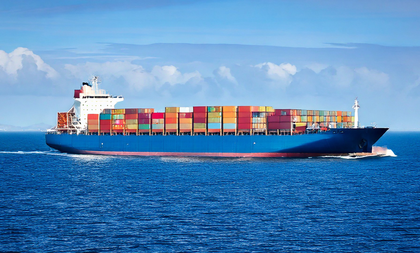Large size of domestic market cushions India against US tariff hikes
By IANS | Updated: July 30, 2025 19:14 IST2025-07-30T19:05:12+5:302025-07-30T19:14:49+5:30
New Delhi, July 30 India’s exports could face tariffs of up to 25 per cent if the bilateral ...

Large size of domestic market cushions India against US tariff hikes
New Delhi, July 30 India’s exports could face tariffs of up to 25 per cent if the bilateral trade agreement with the US is not finalised by August 1 but the macroeconomic impact of any hike in tariffs would be cushioned by the large size of the country’s domestic market, according to economists.
A recent Morgan Stanley report had stated that India is the “best placed country in Asia,” amid the global uncertainty triggered by US President Donald Trump’s threat to jack up tariffs, because of the nation’s low goods exports to GDP ratio.
“While India is exposed to direct tariff risks, we believe on balance India is less exposed to global goods trade slowdown considering that it has the lowest goods exports to GDP ratio in the region,” the report stated.
According to a Fitch report, the large size of India’s domestic market, which reduces reliance on external demand, is expected to insulate the country from the US tariff hike, with the economy expected to maintain a growth of 6.5 percent in FY26.
Economists are of the view that India’s export potential also depends eventually on the amount of tariff India faces when compared with other competing nations such as China.
US and Chinese officials agreed to seek an extension of their 90-day tariff truce on Tuesday, following two days of talks in Stockholm to find a way of resolving the trade war which has the potential of jacking up tariffs to 3-digit levels. While China is using its dominance over rare metals as a bargaining chip, US negotiators have said that President Donald Trump will take the final call.
The US has set a 1 August deadline for India and several other countries to either reach a trade agreement or face increased tariffs. Indian and American officials have been negotiating a trade deal for the past few months. A high-level official delegation, led by chief negotiator Rajesh Agrawal, returned from Washington after the trade talks with US officials without reaching a final agreement on the sensitive issue of trade in agricultural and dairy products that the US is pushing for.
The Indian team was in Washington, DC for negotiations on an interim trade agreement with the US from June 26 to July 2.
The US is seeking broader market access for its agricultural and dairy products, which is a major hurdle, as for India, this is a livelihood issue of the country’s small farmers and hence is considered a sensitive area. However, India would be able to import more energy products and defence equipment from the US after the agreement is signed.
While India is looking to secure an exemption from President Donald Trump's 26 per cent tariffs by concluding an interim deal before August 1, it is also pushing for significant tariff concessions for its labour-intensive exports such as textiles, leather and footwear.
According to a latest SBI Research report, India's exports to the US constitute only 4 per cent of its GDP so the direct impact of the hike in tariffs on Indian goods will have only a "limited" impact. India’s exports to the US are on a declining trend since FY23 with the share in total exports around 17-18 per cent. The top 15 items exported to the US accounted for 63 per cent of total exports, the report pointed out.
When asked about the progress on trade talks with India, Trump on Tuesday said: "We're going to see. India has been a good friend, but India has charged basically more tariffs than almost any other country".
"But now I'm in charge, and you just can't do that," he added.
Disclaimer: This post has been auto-published from an agency feed without any modifications to the text and has not been reviewed by an editor
Open in app